- Home
- Trends
- Furniture And Decor
- Indoor Plants
- Palm Trees Indp
Palm Trees: How to Grow and Care?
Want to add a tropical flair to your home? Palm Tree can do the job.
Basic Care, consistent basic care is important for the palm tree that matches their special needs to keep them healthy and attractive. The palm trees are a great addition to the homes and offices in coastal and tropical areas. With over 2500 hundred varieties of palm tree, around the world, you will need to know and do a bit of research to find the right one for you. It is said that palm trees share a set of similar requirements and treatments. It can adapt to the indoor environment as well and helps in cleaning the indoor air.
Table of Content
Palm Tree
These are perennials that grow into stemless shrubs or trees. The small ones are called palms while the grown ones (grown into a tree) are called palm trees. Most of these palms are grown in tropical and subtropical areas. You can easily identify them because of their large evergreen fronds that grow out on a single straight stem without any branches.
Palm trees symbolize life. The Assyrians believed that a tree that grows near the streams is the ultimate symbol of life. The palm tree was found to grow beside the streams and was chosen as the symbol of life. They valued the palm trees and tried their best to keep them healthy and strong.
The palm can live up to centuries. Yes, you read that right. There are a number of palm trees that have existed for more than 50 years. Depending upon the species of the palm tree, it can live up to decades, and centuries. This means that your palm tree has the capacity to outlive you. The cells of the palm trees are not replaced with new cells. According to recent evidence, palms are one of the oldest living beings on the cellular level.
Every palm tree produces a different type of fruit but not all of these fruits are edible. Fruits like coconut and dates are edible and delicious. But fruits like sago are poisonous to both humans and animals. So, it is better to know about the palm trees and their fruits before taking a bite.
Types Of Palm Trees
Palm trees have varieties that you can explore over time. It has a sense of style, elegance, and greenery that you can add to your real estate. The palm tree is sensitive to weather and transplanting conditions as intermediate gardeners. The palm tree may require a specific set of conditions and requirements to stay healthy and strong depending upon its variety.
Palm trees are one of the most commercially grown plants in the world for their number of benefits and use. Some of the popular types of palm trees are areca palm, date palm, saw palm, acai palm, sago palm, ponytail palm, coconut palm, fishtail palm, royal palm tree, date palm tree, travellers palm, and many more.
Areca Palm
Scientific Name: Dypsis Lutescens

Areca Palm, also called Bamboo Palm, Yellow Palm, Or Golden Cane Palm, was once an endangered plant species. These tall, attractive, and clumping palms look more like bamboo. It has golden and smooth trunks similar to a bamboo clump.
Bamboo palm can do well in both full and partial light. Ideally, you should protect the areca palm from strong, direct afternoon light as the scorching heat can damage the foliage of the tree. If you plan to keep the bamboo palm indoors, keep it near a south or west-facing window where they can get bright light exposure.
Areca palm requires a peat-based, well-draining soil for the indoor environment and slightly acidic soil with the well-drainage capacity to survive in the outdoor environment. It is also important to lower the pH of the soil and improve porousness by adding sand and peat in the soil for bamboo palm.
The bamboo plant needs moist soil and is sensitive to overwatering. Use distilled water or rainwater for watering the palm as they are sensitive to fluoridated water. Maintain an indoor temperature of 65 degrees Fahrenheit to 75 degrees Fahrenheit. This palm tree planted outdoors can survive in a region where the temperature does not drop below 50 degrees Fahrenheit.
Date Palm
Scientific Name: Phoenix Dactylifera
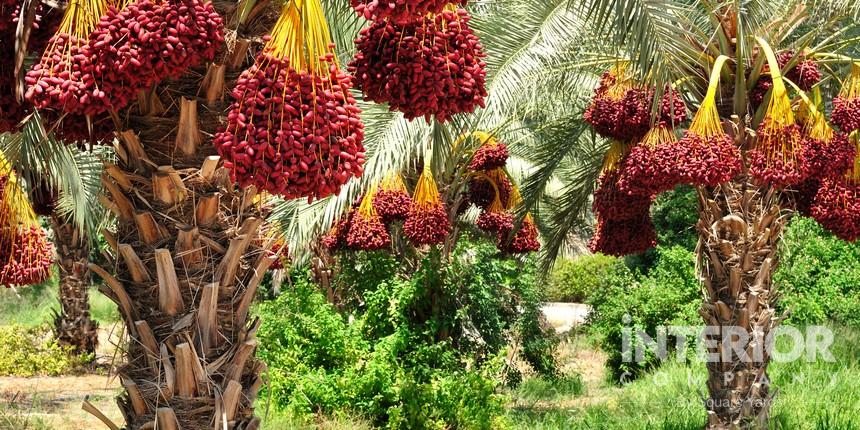
Date palm is one of the oldest and main staples of the Southwest Asia and North America region. It has small and yellow-colored flowers that are attached to the sprinklers. These flowers turn into fruits called date palm fruits. This palm can survive in a region with a temperature above 20 degrees Fahrenheit and can pollinate at 95 degrees Fahrenheit.
To get the fruit of the palm, it is important to plant a male date palm and a female date palm in an area with full sun and well-draining soil. It can also grow in sandy, loamy, and clay soil. Plant it in the spring season with double the hole as the actual root in the soil.
Along with irrigation and support, date palm requires good nutrition management with pest and disease control care. You can use manure or fertilizers high in potassium for the palm. Deal with pests and diseases as quickly as possible. Date palm prefers dry soil. You will rarely need to water the palm, once it is established.
Saw Palm
Scientific Name: Serenoa Repens
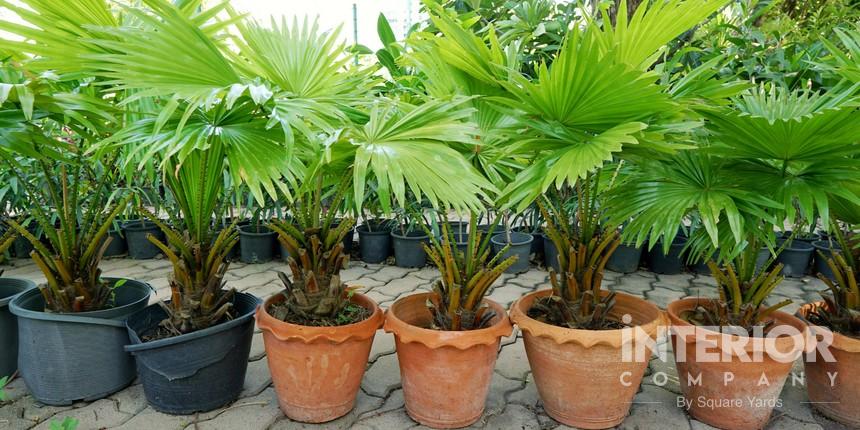
Saw Palm is also called saw palmetto, cabbage palm, and American dwarf palm. The name of the palm tree comes from its leaves. The edges of the saw palm look like a saw with spikes that runs long to the side of the plant. It is a slow-growing plant whose fruits are used to make medicines.
It is difficult to move the palm after it is planted. So, decide the place very carefully. Choose the place where the saw-like teeth can not harm anyone. This plant prefers full light but can grow in every light condition. First, it might need regular watering but will become drought-tolerant once established.
Occasional grooming sessions such as pruning the dead fronts, fruits, and flowers are all the maintenance requirements for the saw palm.
Acai Palm
Scientific Name: Euterpe Oleracea
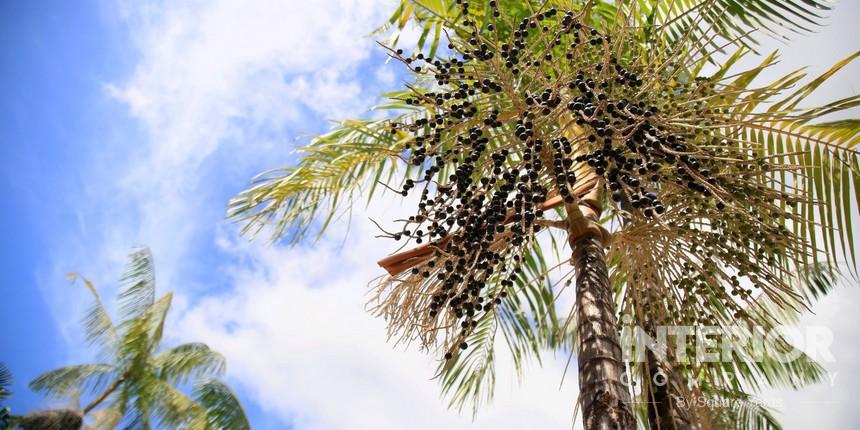
Also known as Assai palm, pina palm, and Acai Palma, this plant has a slender trunk with dark green pinnate leaf, emerging from a reddish crownshaft. This is an uncommon plant bearing an edible delicious natural fruit with cell reinforcements, fundamental omegas, and amino acids. One single tree of acai palm can produce thousands of fruits in a single season.
Acai palm requires a warm tropical environment to grow effectively. Hence, it can grow in areas with temperatures of 30 degrees Fahrenheit and more. Also, the plant requires partial to full light for healthy growth. Apply good quality palm fertilizer to the acai palm during the growth season. It requires acidic, well-drained soil. In the wild, acai palm has the capacity to grow in swamps and floodplains.
Sago Pa
Scientific Name: Cycas Revoluta
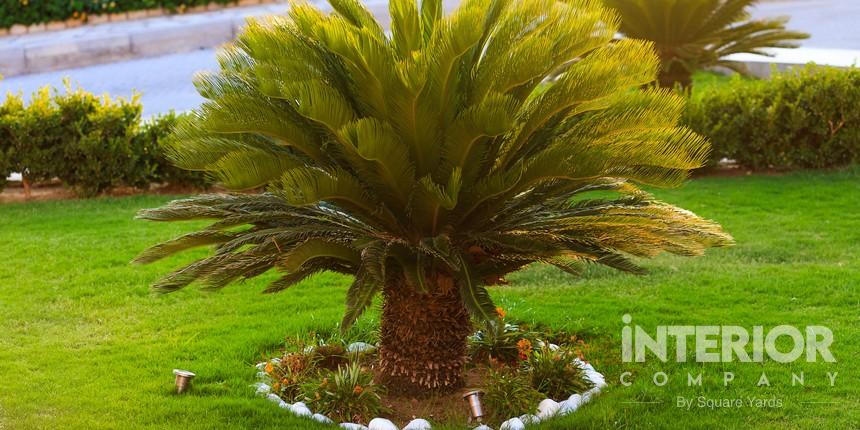
If you are a beginner, this palm tree is for you. Sago palm has feathery foliage and easy to care plants. This feature makes it one of the best choices for a houseplant. It is an interesting addition to any place, including your office, children's room, and more.
Sago palm is actually a cycad. It means that it has been in existence since prehistoric times.
It is an easy-to-care plant with some specific requirements. The plant requires regular fertilizers on a monthly basis for healthy growth. Also, sago palm needs bright sunlight and can also tolerate low light situations.
Too much moisture is a big no for sago palm. They require well-drained soil. Like other cycads, these palms do not respond well to overwatering and extreme moisture conditions. On average, sago palm blooms every third year, often in the late spring. If you plant it in a container, it can take up to 15 years to bloom.
Ponytail Palm
Scientific Name: Beaucarnea Recurvata
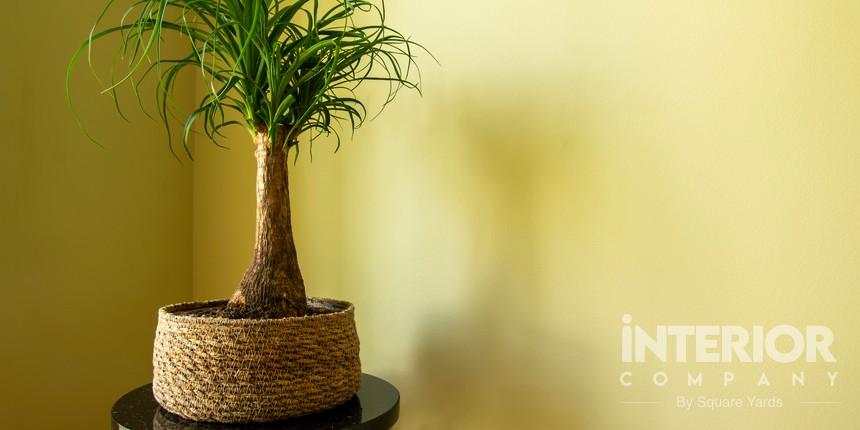
Ponytail Palm is not actually a palm but a succulent. It relates to the desert plant Yucca and Agave. It is an eye-catching houseplant that requires minimal care that can reach up to 30 feet in height. The leaves can grow up to 3 feet long when planted indoors and double that length when the ponytail palm is kept outdoors.
This plant has a bulb-like trunk that stores water. And the leaves that grow out from the bulb-like trunk resemble a ponytail as the name suggests. Ponytail palm loves to stay a little crowded in the container that they are planted in.
The ponytail palm needs watering every 3 to 4 weeks. Let 2 to 3 inches of soil dry from the top and then water it with an adequate amount of water. It is a slow-growing plant, ideal for people with less time or who travel frequently.
Travellers Palm
Scientific Name: Ravenala Madagascariensis
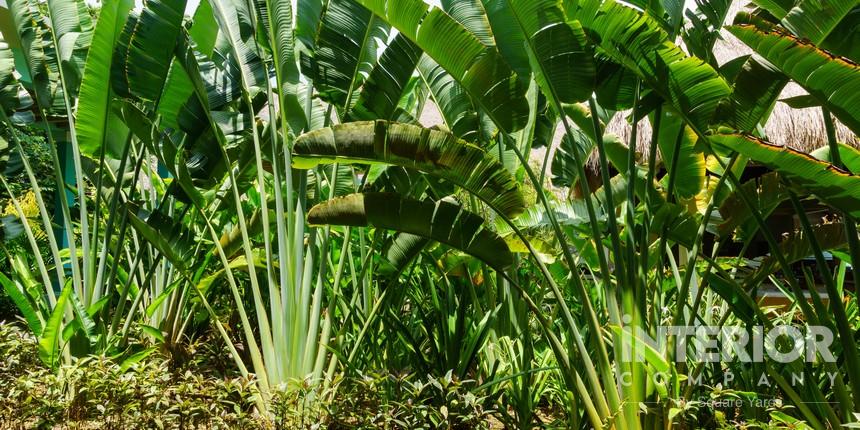
This palm is not an actual palm but a close relative of the bird of paradise plant. Travellers palm is a nifty-looking tree with the orientation of the giant leaves fan. The tree aligns its photosynthetic fan in the east-west direction, which serves it as a crude compass. It allows the weary travellers to orient themselves.
Travellers palm needs monthly feeding of liquid fertilizers for wholesome growth. It needs watering once a week. The moist and well-drained soil required by the travellers plant helps them for robust growth. Avoid wetting the foliage and keep the soil moist for the travellers palm.
Coconut Palm
Scientific Name: Cocos Nucifera
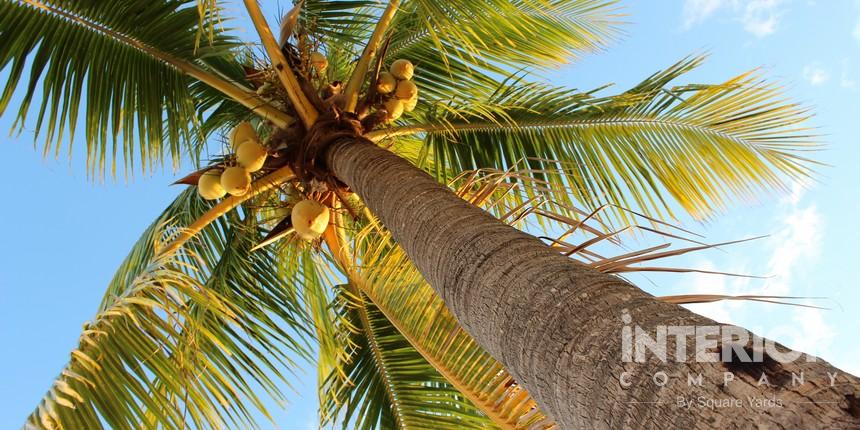
The Coconut palm tree has existed for more than 4,000 years. Yes, a 4,000 thousand years old variety of the palm. It produces the fruit coconut, which is one of the most important sources of food around the whole world. Coconut palm is usually found in tropical places as well as they have the capacity to withstand high temperatures and floods.
Keep your coconut palm in an area with well-drained soil and full, bright sunlight. It grows well in the soil with a pH level somewhere between 5 to 8. It is suggested to move the coconut palm inside your home when the temperature drops below 70 degrees Fahrenheit.
Water the plant once a week except for the days when there are rainfalls. Choose the fertilizer with potassium, nitrogen, and manganese for your coconut palm for robust growth.
Fishtail Palm
Scientific Name: Caryota
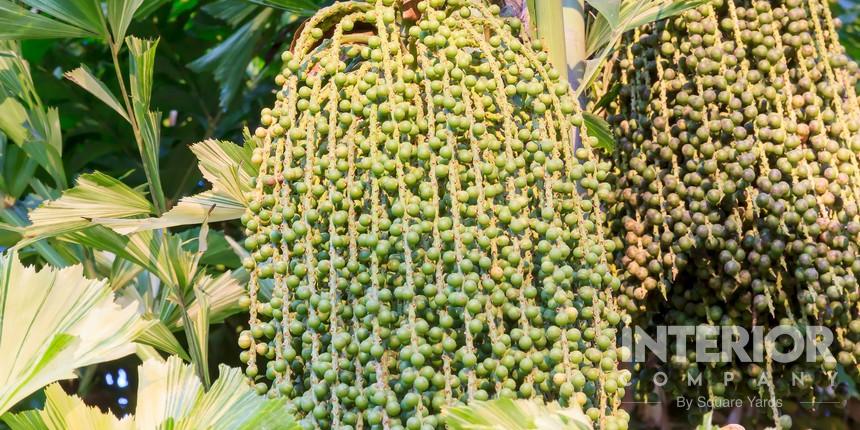
These palm trees are called fishtail palm because of the shape of their leaves. The leaves are shaped like jagged fishtails with thick, swirled layers and ruffle fronds. They are clustering palms that grow dense and full. You can use this palm as a privacy screen, especially when they are young.
Try going for fishtail palm when you wish to grow clumping bamboo. Fishtail palm will not grow as long as bamboo but can get used for a tropical look with privacy in your garden and home. This plant can grow up to a height of 20 to 25 feet.
Fishtail palm are relatively cold tolerant as well as best when kept in warmer regions. You can grow this palm tree in full as well as partial shade. But remember, the more shade the plant will be in, the slower the growth will be.
The mature stems of the fishtail palm produce inedible fruits and die afterward. Use a granular palm fertilizer for the palm in the summer, spring, and fall seasons. Try to put peat humus in the soil while planting this palm tree. Get rid of thin and old fronds as well as the tall trunks every once in a while to keep the dense fronds decluttered.
Also, keep in mind that planting the fishtail palm in high humidity and moist soil all the time. Keep a spray bottle handy and mist the palm many times a day.
Royal Palm Tree
Scientific Name: Roystonea Regia
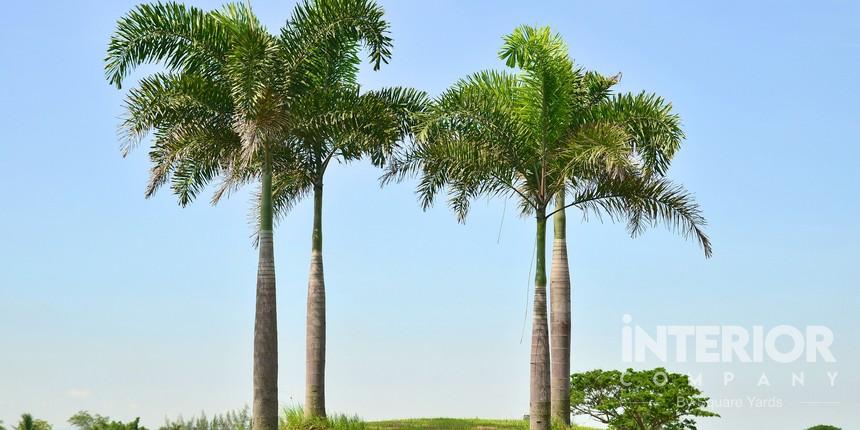
The royal palm tree is an archetypal tall and straight palm tree. These are the palms you are most likely to see standing on the roadsides of southern Florida and California. These trees are impressive specimens with some special care requirements.
Royal palm tree is a little tricky to grow and care for as they are prone to diseases and mineral deficiency. At the same time, they are relatively strong to deal with them too. Royal palm tree can be hardy to 28 degrees Fahrenheit. The palm can not tolerate salty soil but can tolerate salt sprays as well as withstand strong winds.
When you provide them with plenty of fertilizer and water, they will grow very quickly but are moderately drought-tolerant. It will grow well in damp situations and can live healthily with regular watering. Royal palm tree can grow well in partial light. But after reaching a mature age, they will need full light. And at last, plenty of room for them to accommodate their large construction.
Date Palm Tree
Scientific Name: Phoenix Dactylifera L.

Dates come from this palm tree. It is one of the staple foods in many areas produced by palm trees. The date palm tree plays a major role in both the social and economic life of many regions. It is an evergreen palm that can reach the height of 15 to 40 meters and the root can grow to the depth of 6 meters.
The date palm tree has a straight stem in the shape of a cylinder. It also bears 100-120 large fronds of size 4 to 7 meters. This palm tree is common in warm regions of the world. The date fruits grow on the palm during the rainy season and can rot before they can mature. Date palm tree can survive and grow in an area of 20 degrees Fahrenheit.
The fruit of the plant needs hot, dry temperatures with warm nights to grow. After planting the palm, you will need to follow a good date palm tree care routine. Along with the right irrigation and support, it needs good nutrition management. Always be on the lookout for pests and diseases to keep your plant healthy.
Once planted, you will need to rarely water them as they prefer dry soil. Keep weeds and turf away from the roots to keep the plant healthy and let them grow in a good environment.
These palm trees are easy to grow indoors and outdoors with a basic set of requirements. Also, it can take a fair amount of negligence from your side. The container or the place you will choose for your palm tree will be its home, so choose it very wisely.
Now, as you have learned about different types of palm trees and how to take care of them, choose your favorite today. Bring home your palm tree to add greenery to your home.
Frequently Asked Questions (FAQ's)
[sc_fs_multi_faq headline-0=”h2″ question-0=”Why are palm trees bad? ” answer-0=”According to environmentalists, growing palm trees is a bad decision. Palm oil is responsible for about 8% of deforestation in the world. Vastu says that planting a palm tree in your home can bring poverty and has negative impacts on the health of the people living in that home. ” image-0=”” headline-1=”h2″ question-1=”What is special about a palm tree? ” answer-1=”Palm trees are the symbol of victory, peace, and triumph that makes the plant special. It shows us flexibility and adaptability that we all can learn from them. ” image-1=”” headline-2=”h2″ question-2=”What is a palm tree used for? ” answer-2=”Palm trees are used for rafting and roofing. It is also used as a constructive building material. Palm trees produce fruits such as coconut and dates which are important sources of income in many regions. ” image-2=”” headline-3=”h2″ question-3=”Is it good to have a palm tree at home? ” answer-3=”Palm trees make a very good houseplant as they are tolerant of negligence and grow the best when given proper care. It is said that keeping a plant tree at home can bring poverty. So, one should not keep a palm tree at home. ” image-3=”” headline-4=”h2″ question-4=”Is Areca palm a good indoor plant? ” answer-4=”Areca palms are one of the easiest palms to grow at home that has beautiful tropical foliage. It will give a tropical feel to the home with a toxic-filtering capacity.” image-4=”” headline-5=”h2″ question-5=”How to care for an areca palm plant? ” answer-5=”Keep the soil moist during the spring and summer seasons. Use time-release fertilizers to fertilize the areca palms in spring. Also, let the soil dry in between watering sessions. ” image-5=”” headline-6=”h2″ question-6=”Are palm trees a tree or a large plant? ” answer-6=”As palm trees do not have secondary growth and wood, botanists defined them as large, woody herbs. Primary thickening and lignification have created the tough and wood-like epidermis. Hence, palm trees are said to be large plants. ” image-6=”” headline-7=”h2″ question-7=”Where can I find date palm seeds? ” answer-7=”You can find date palm seeds in different online stores. You can also get them in the stores or fruits and vegetable markets. ” image-7=”” headline-8=”h2″ question-8=”What determines the maximum height of a palm?” answer-8=”The variety and species of the palm tree defines and determines their height. Few plants or in special cases of a specific species can not grow at their determined height. ” image-8=”” headline-9=”h2″ question-9=”What is this palm tree with the red fruit called? ” answer-9=”Pejibaye Palm has red, peach-like fruits. It is also called peach palm fruit because of its shape. ” image-9=”” headline-10=”h2″ question-10=”What’s involved in maintaining a palm tree?” answer-10=”To maintain a palm tree, all you need to do is water them on a regular basis, provide them with palm fertilizers, and plant or place them under the sunlight. ” image-10=”” count=”11″ html=”true” css_class=””]
Ready for a home transformation?
Let our designers assist you!
Recent Posts
Related Category
- Balcony
- Bedroom
- Home Decor
- Living Room
- Outdoors

































